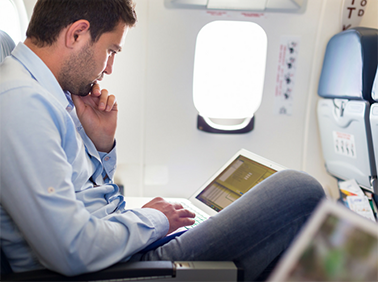 If you’re like most people, you rely on your electronic devices every day. Whether you check your emails from your smartphone or complete work on your laptop, having easy access to your electronic devices is important. When you travel, taking them with you can be tricky because you don’t want the devices to get damaged on the journey. Here are five tips you can use when traveling with electronics.
If you’re like most people, you rely on your electronic devices every day. Whether you check your emails from your smartphone or complete work on your laptop, having easy access to your electronic devices is important. When you travel, taking them with you can be tricky because you don’t want the devices to get damaged on the journey. Here are five tips you can use when traveling with electronics.
Pack Accordingly
When traveling, make sure to protect glass screens from cracking for each of your devices. Make sure that each device has a protective case designed specifically for it. For instance, laptops should be placed in laptop sleeves in a laptop bag, preferably made from a thick, soft material. Also, you’ll want to pack your laptop on the top of the bag so you can take it out during airport screenings and it won’t get damaged from heavy objects that have been placed on top of it. If you have an iPad or tablet as well, but you don’t have a heavy-duty case for that device, one trick is to place it directly next to your laptop with the screen facing the laptop. That way the laptop acts as a layer of protection for your iPad or tablet screen.
Turn Devices Off
When you are traveling distances with your electronic devices, especially laptop computers, consider keeping them turned off for the duration of the trip unless you are actively using them. Some people put their laptops and tablets into sleep mode before putting them into a carrying case, but that may not be enough. If you accidentally drop the laptop or tablet, it will fare better if it is turned off because it will protect the delicate electronic components and it will help prevent data loss.
Organize Device Chargers
Bring extra chargers! Find a way to organize all of your device chargers so you have easy access while you travel. Many airports and planes have USB ports available which can make it easier to charge your cell phone, but there are still plenty that do not so it is important to have access to your wall plug easily. If you stop somewhere and want to use your laptop, you don’t want to waste precious time trying to find its charger. There are specially-made carrying bags for chargers that can make it easier, with labels for each cord.
Avoid Duplicate Devices
In an effort to protect your devices and make carrying your stuff easier, consider only taking one device with you that can do multiple things. For instance, if you plan to use an e-reader, evaluate if you need to carry both your Kindle and your iPad if the iPad has the Kindle reading app. You will have access to the same content either way, and not carrying your Kindle around can lighten up your bag.
Research International Electronics Rules
Depending on where you go and how you plan to get there, you may not be able to take certain devices. There are bans on some devices, such as laptops, when traveling to certain other countries. If you travel to these locations, you should leave the prohibited devices at home.
In addition, some charger cords won’t work overseas so be sure to do some research ahead of time. Some countries‘ outlets, like most in Europe, produce a different voltage than what is in the U.S. (for example, 220v in Europe vs 110v in U.S.). You may need a converter depending on your device. A travel adapter is different than a converter: an adapter will adapt your device’s prongs to fit into a differently shaped outlet, but a converter will convert the voltage to match your device’s specifications, otherwise the device may get damaged. Some devices‘ charging adapters can handle a range of voltage and only need a plug adapter (like most original Apple MacBook chargers – they list 100-240v on them). Check your device‘s specifications to be sure.
Traveling with electronics can be easy. If you find that you need more advice or to buy a preowned device, stop by or call TCR: Triangle Cellular Repair at (919) 263-2699.
